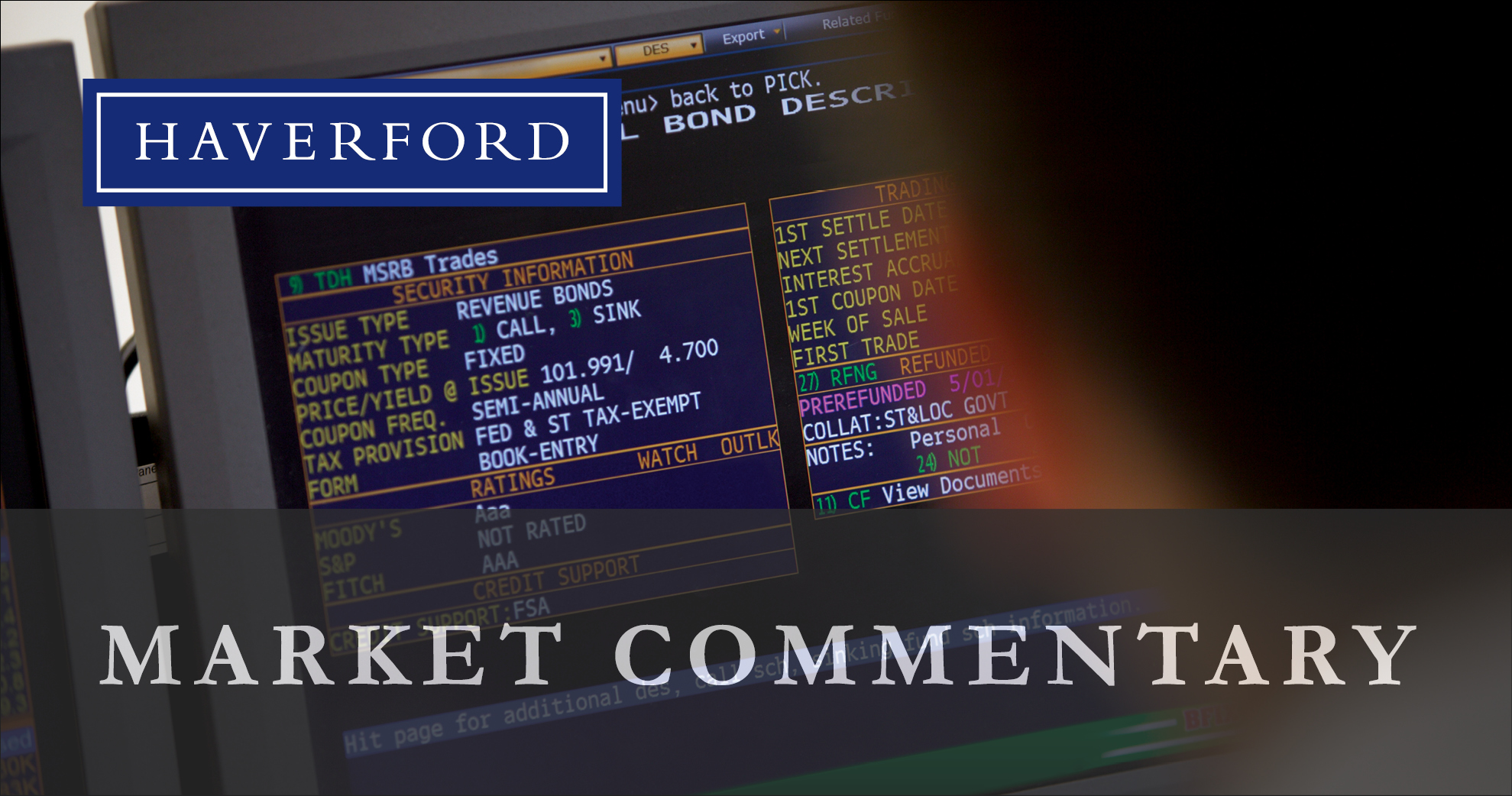Tim Hoyle, Chief Investment Officer
thoyle@haverfordquality.com
Economic Resilience Amidst Market Volatility
The market officially ended the President’s post-election honeymoon as the S&P 500 traded into correction territory on March 13, down 10% from the all-time high in mid-February. The last few weeks have been chaotic, to say the least. Regardless of one’s views on the President’s policies and goals, most Americans wish he would be more consistent with his messaging and follow through. Along with Treasury Secretary Scott Bessent’s talking points, the markets are hearing ‘pull back’.
Historically, corrections occur every year and a half, while bear markets are far less frequent. Bear markets almost always occur in response to, or concurrent with, an economic recession. Corrections can occur for any number of reasons, including an errant post on X (formerly known as Twitter). The President’s most recent market decimating posts looked toward April 2nd and the initiation of reciprocal tariffs, and a 200% tariff on French wines. These are not market-positive headlines, but we continue to believe the likelihood of a recession in the coming year is low. The recent “growth scare” is based mostly on survey data, tariff fears, and comments from the President and Treasury Secretary. The President could just as easily start highlighting economic positives and pro-market initiatives.
Despite the chaos, the President can claim some wins. Encounters at the southern border of the United States are down, with a commensurate decline in fentanyl seizures being reported. Talks of a cease fire between Ukraine and Russia are more active than at any point since hostilities began in 2022. These wins could embolden the President to continue on his current course but may also provide him the opportunity to claim victory and pivot the administration’s focus towards those policies that excite, not scare, the markets. Regulatory reforms in the energy and financial sectors and extension of the 2017 tax cuts will be key to restoring healthy investor sentiment.
A typical market correction lasts a few months, while it can take up to a year or longer to exit a bear market. Our belief in the resilience of our economy and the earnings power of corporate America suggest this correction is not the harbinger of a recession and bear market. History tells us that market corrections can provide investors with an opportunity to put dry powder to work.
Many investors may disagree with our assessment, as is often the case in periods characterized by extreme uncertainty. However, we are confident that even during the most difficult periods, our discipline, our focus on the controllable, and our bias towards quality and downside protection will continue to help meet our clients’ long-term goals.
As long as earnings expectations remain stable, this downturn will remain just a correction. We hope you can join us in remaining optimistic despite the current environment.

S&P 500 Annual Earnings per Share Expectations
Source: Factset, March 14, 2025. EPS for 2025-2026 are estimates. The S&P 500 Index is a capitalization-weighted index of 500 stocks intended to be a representative sample of leading companies in leading industries within the U.S. economy. Index returns are provided for illustrative purposes. It is not possible to invest directly in an index. Index performance assumes dividend reinvestment, but does not assume transaction costs, taxes, management fees, or other expenses. Past performance is no guarantee of future results.
Media Inquiries
Veronica Mckee, CMP
Direct Phone: 610.995.8758
Email: vmckee@haverfordquality.com
Katie Karsh
Direct Phone: 610.755.8682
Email: katie@gobraithwaite.com
Disclosure
These comments are provided as a general market overview and should not be relied upon as a forecast, research or investment advice, and is not a recommendation, offer, or solicitation to buy or sell any securities or to adopt any investment strategy. Opinions expressed are as of the date noted and may change at any time. The information and opinions are derived from proprietary and non-proprietary sources deemed by Haverford to be reliable, but are not necessarily all-inclusive and are not guaranteed as to accuracy. Index returns are presented for informational purposes only. Indices are unmanaged, do not incur fees or expenses, and cannot be invested in directly.
Investments in Securities are Not FDIC Insured · Not Bank Guaranteed · May Lose Value


